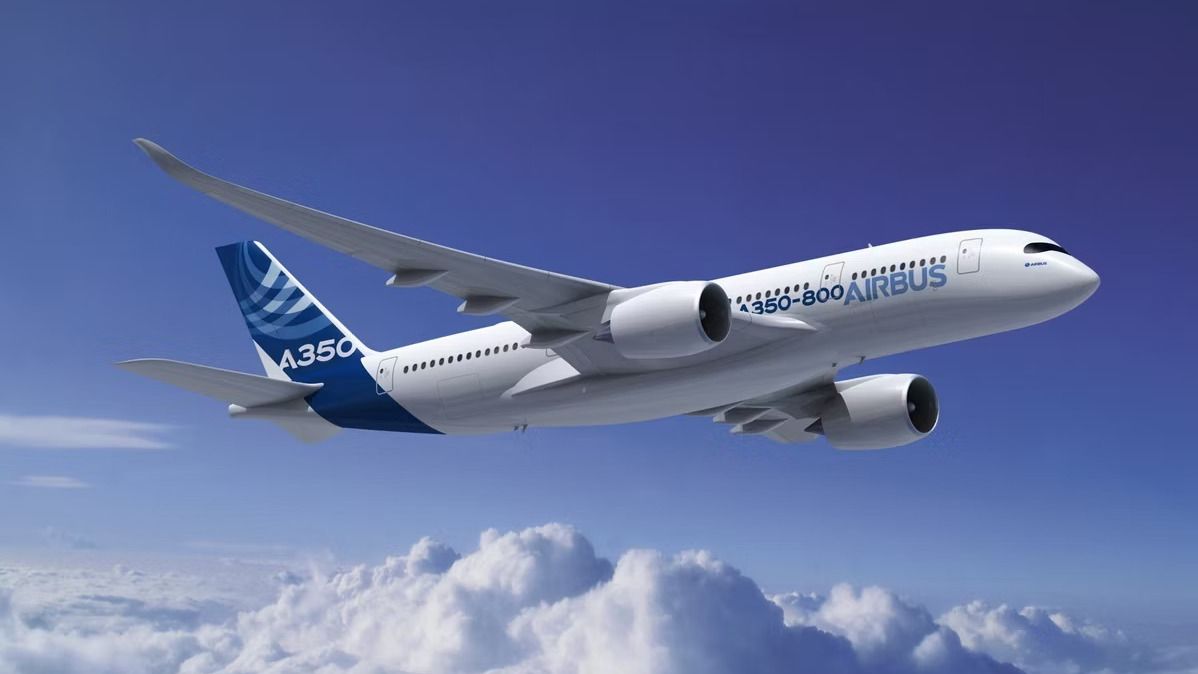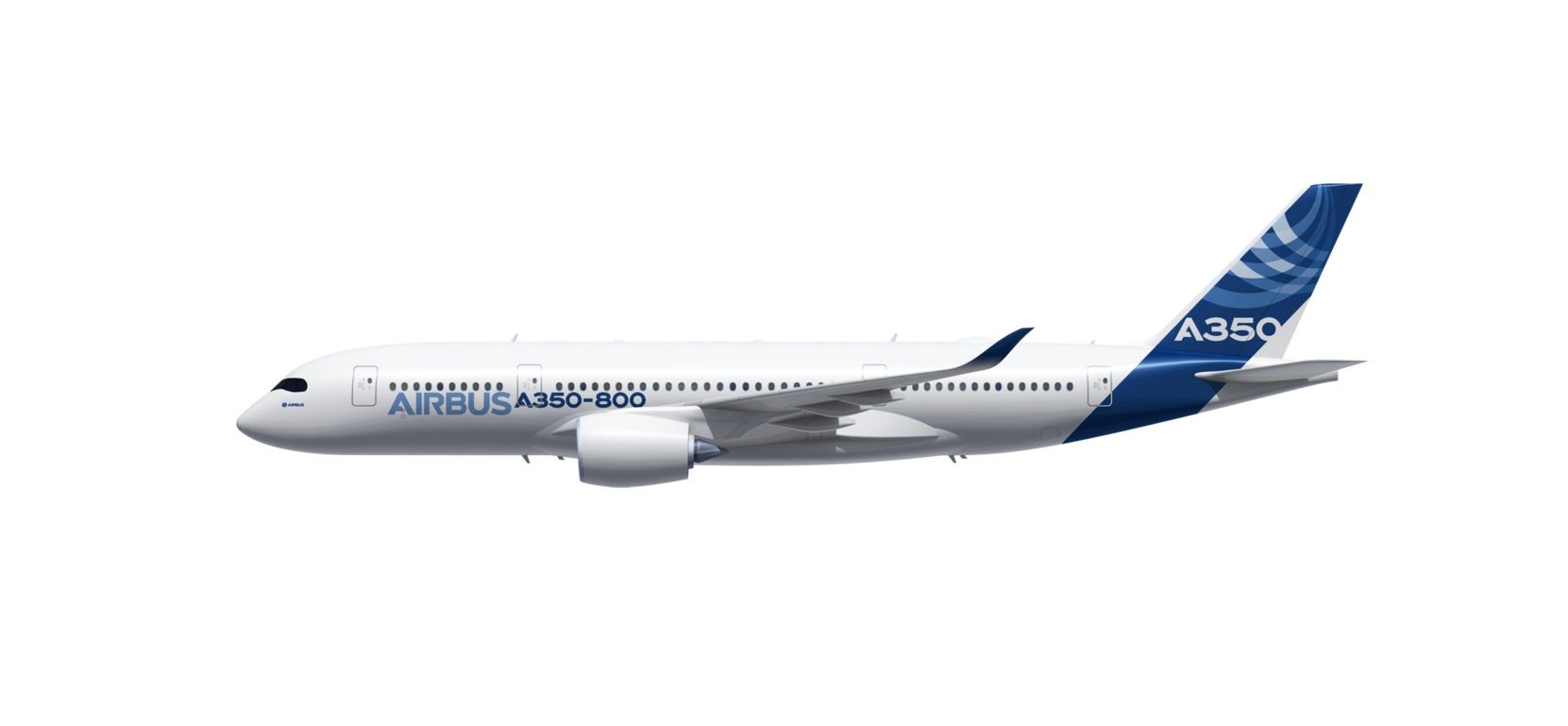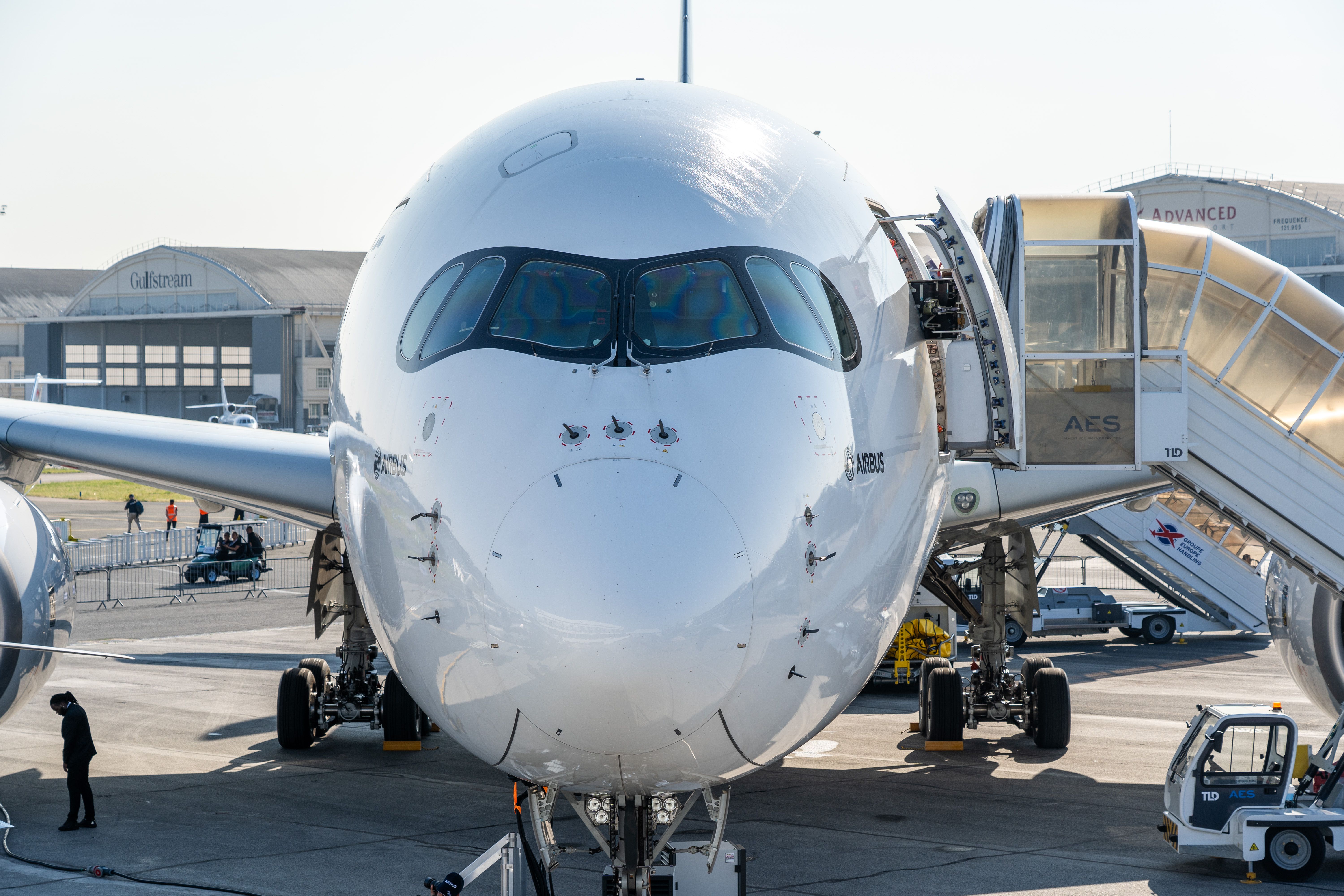Summary
- The A350-800, a shorter variant of Airbus’s A350 family, was initially planned with a smaller capacity and slightly greater range than the larger -900 variant.
- Due to customer conversions and the introduction of the A330neo, the A350-800 program was eventually canceled by Airbus, leading to the filling of that segment by the A330-800 and -900 variants.
- While it is unlikely that Airbus will revive the A350-800, there is ongoing debate about its potential revival and its potential competition with Boeing’s proposed New Midsize Airplane (NMA).
When European manufacturer Airbus originally launched the A350 program, it consisted of three variants: the -800, -900, and -1000 models. In the end, the latter two variants survived through to production and delivery. As of November 2023, a total of 521 A350s (whether A350-900, A350-900 ULR, or A350-1000) are active and employed by 37 carriers globally. An incredible 498 are still on order. However, the A350-800 version ultimately never came to fruition. So what exactly happened to this shorter variant of Airbus’s next-generation long-range widebody twinjet airliner?
Planned specifications
Airbus had designed the -800 to be the shortest variant of the A350 family. The aircraft would have measured 60.45 m (198.3 ft) long. This is significantly shorter than the 66.8 m (219.2 ft) and 73.79 m (242.1 ft) of the -900 and -1000 variants, respectively. The A350-800 had a planned capacity of 276 passengers in a three-class configuration. Meanwhile, the -900 can seat 300–350 passengers across three classes, with the -1000 holding between 350 and 410.
The planned range of the A350-800 was 15,270 km (8,245 NM). This represents a small advantage over the mid-sized -900, which has a range of 15,000 km (8,100 NM). However, it does not match the capabilities of the larger -1000 variant. This version can operate flights over staggering distances as long as 16,100 km (8,700 NM).
The intention behind the A350-800 was to offer airlines an option that would suit their operational needs. A shorter A350 would allow for (slightly) greater range and (slightly) increased efficiency at the cost of reduced capacity – around 50 seats less than the -900.
The -800 had as many as 182 orders in mid-2008. However, numbers shrank in subsequent years, as Airbus saw customers convert their orders to the larger -900 variant.
Photo: Airbus
One of the key customers of the -800 was US Airways. The company signed for 20 A350s in 2006, expanding its order to 22 in 2007, with a mix of the A350-800s and a few of the larger A350-900s. However, US Airways ended up merging with American Airlines, and its plan for a widebody Airbus fleet did not match American’s Boeing-focused widebody fleet. Eventually, American Airlines opted to switch all the orders for the A350 from the -800 to the -900, before finally canceling the whole order.
This was one of the final nails in the coffin of the project. Then, in 2014, something happened at the Farnborough Airshow that would seal the fate of the A350-800.
Eclipsed by the A330neo
Airbus revealed the A330neo at the 2014 Farnborough Airshow. Shortly after this, Airbus confirmed the cancelation of the A350-800. Having done so, it then made attempts to convince customers with orders for the aircraft to switch to the larger -900, or to the newly-revealed A330neo. The A330neo is an umbrella term for two next-generation variants of the aircraft, namely the A330-800 and -900 versions. At the time, Fabrice Brégier, former Airbus CEO, said,
“I believe all of our customers will either convert to the A350-900 or the A330neo. The A330neo is the more efficient solution (compared to the A350-800).”
The program’s cancelation meant that the 287-seat A330-900 and 257-seat A330-800 would fill that space. Hawaiian Airlines initially made the switch to the A330neo, but then canceled its order and instead signed up for the Boeing 787 ‘Dreamliner,’ which was poised to arrive in 2021. However, Hawaiian’s first delivery has been delayed, and the company has still not yet received its first Dreamliner as of November 2023.
As such, the only long-haul Airbus airliners operated by Hawaiian are its older A330-200 aircraft. Other airlines, such as Russian flag carrier Aeroflot and South Korea’s Asiana, switched to larger variants of the A350.
In 2013, Leeham News reported the A350-800 was seen as an expensive A330-300, with the same operating costs as the larger capacity A350-900. At the time, this media outlet argued there was a good chance the A350-800 would be dropped in favor of proceeding with an A350-1100. While the -800 was indeed dropped, the -1100 version never happened.
Could it be revived?
Times continue to change, and airlines are always adapting to what the market wants. This is particularly crucial today, in the face of the drop in passenger demand caused by the ongoing pandemic.
In a May 2019 article, we explored the debate as to whether Airbus may produce the A350-800 after all. This discourse was significant due to the potential for the -800 to be a competitor for the proposed Boeing 797 ‘New Midsize Airplane.’
While the aircraft variant was never fully canceled, it is unlikely Airbus will look to revive the A350-800. Instead, the company has focused on milking the successful -9 and -10 variants, launching the A350F, and gaining huge amounts of media and popular interest with Project Sunrise, along with Qantas. The Project Sunrise is Qantas’ dream to connect Sydney to London and New York non-stop, employing the Airbus A350-1000. The inaugural flights are projected to take off in late 2025.
Conclusion
The move towards a re-engined A330 of a similar size to the A350-800 seems like a wise move. Many airlines around the world already operate the original A330-200 and -300 variants. As such, training for the newer ‘neo’ versions would be minimal compared to adopting the less-established A350 into an airline’s fleet.
Airlines are not the only party to benefit from this move. From a passenger experience perspective, many travelers will see the A330neo’s 2-4-2 economy configuration as a more favorable option than the 3-3-3 setup found on existing A350 aircraft. This configuration has no seats that are more than one place away from an aisle, and couples, in particular, will appreciate the privacy of having a pair of seats to themselves.
That said, it will still be interesting to see whether, over the coming years, Airbus will go ahead with the A350-800 after all. Either way, the future of long-haul air travel is positively becoming more efficient than ever before.
Would you be interested in seeing an A350-800 in the future? Do you think it makes sense to launch the model? Let us know in the comments below.



